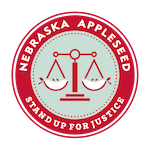
Brain drain, a high proportion of low-wage jobs, and the current economic downturn all negatively impact the well-being of Nebraska’s families, communities, and economy. At the same time, our workforce is one of the most dedicated in the nation and, in spite of recent increases, our unemployment rate is one of the lowest in the nation.
So what do we do with this set of circumstances? How do we position our state to build on our strengths and come out ahead in economic recovery?
An interim study, LR 172, examines just that issue, and last week Nebraska Appleseed testified in order to assure that the interests of Nebraska’s working families were considered.
We believe that in order to move forward in recovery, it is essential to increase the capability of working Nebraskans and to create opportunities to retrain recently unemployed workers. Two thirds of our 2020 workforce is already working today, meaning that we must improve the skills of our current workers in order to compete in the future knowledge and technology driven economy. However, one in ten Nebraskans does not have a high school diploma or GED and only 36% have an Associate’s Degree or higher.
Because these workers need new skills but must also meet family responsibilities, new models and strategies are needed to increase workforce competitiveness.
Nebraska Appleseed suggests the following steps to position our state, and our working families, to come out ahead in recovery:
- Build “career pathways†models that combine education, supportive services, and on-the job training for workers to obtain good jobs in high demand industries.
- Recognize the need for supportive services, especially child care assistance and soft-skills training, in the development of a quality workforce.
- Invest in Adult Education programming to put low-educated adults back on the path to acquiring the skills necessary to obtain quality jobs.
- Increase investments in and access to need-based financial aid, particularly for non-traditional students.
- Proactively increase collaboration among state agencies.
- Gather useful data and set associated benchmarks.
- Develop a state vision for workforce development to guide stakeholders in the development of education and training programs.
What are your suggestions? What steps do you think are the most important to protect the well being of families in recovery and beyond?

